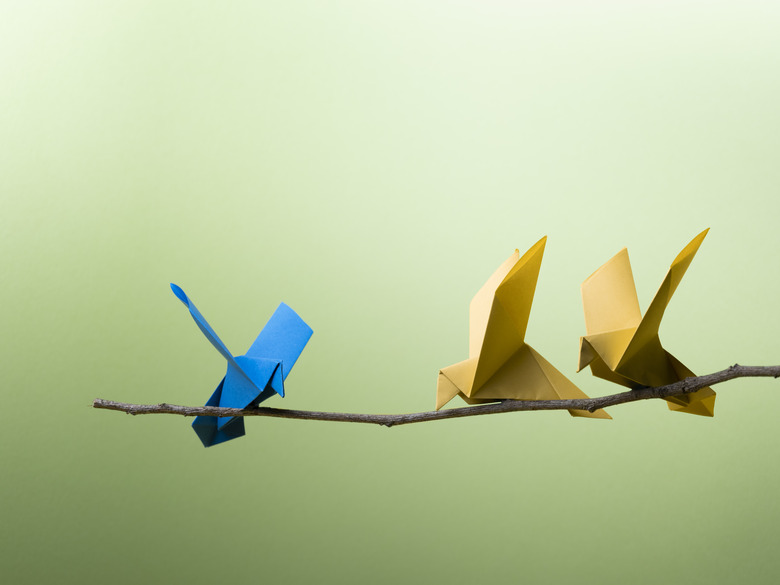How To Make A Bird For A Science Project
Zoology science projects often focus on the external anatomy or internal organs of a specific animal. Birds are a frequent animal studied and a model is more interesting for a science fair display than a simple paper diagram. Determine the specific requirements of the science project and choose an appropriate bird. The model may need to be more detailed than a simple clay figure and should be large enough for all parts to be labeled clearly.
Making a Model Bird
Step 1
Roll six small pieces of brown clay into worm shapes to make three toes for each of the bird's feet. Make sure the toes will be large enough to be seen beneath the Styrofoam egg. Attach three toes to each other at one end of the clay by pressing the worm shapes together.
Step 2
Place the oval Styrofoam egg on top of the feet. The styrofoam egg will represent the body of the bird. Stick toothpicks into the body where individual parts will need to be identified. These items may be as general as wing, abdomen, and breast or as detailed as primaries, secondaries, and wind coverts. Once the toothpicks have been added, remove the egg from the feet.
Step 3
Without removing the toothpicks cover the oval shape with clay to match the color of the bird being represented. A blackbird would use black clay, a finch may use yellow clay or a parrot would be multicolored. Add craft feathers if desired.
Step 4
Shape additional clay into a long flat square and add to the lower part of the egg to create the birds' tail. Shape to mimic the desired length of feathers and correct shape of tail. Glue the completed body back onto the feet.
Step 5
Cover the small Styrofoam ball in clay for the head of the bird. Attach to the body of the bird with additional clay to form the head and neck area. Use toothpicks to mark the parts that will need to be identified for the science project. These may include throat and crown or be more specific such as nape and auriculars (ear coverts). Use additional clay to form the beak for the bird and attach to the head. Black clay can be used to add eyes as well.
Step 6
Remove each toothpick one at a time to add the correct label. Use small slips of paper with the name and glue them to the toothpick. Return the newly labeled toothpick to the correct spot. Allow to dry overnight and test to ensure all labels remain attached and the bird is stable. If needed use glue to reattach anything that is loose.
Things Needed
- Bird anatomy diagram
- Brown clay or art foam
- Small Styrofoam egg
- Toothpicks
- Colored clay – choose clay for the correct color of the desired bird
- Craft feathers
- Small Styrofoam ball
- Slips of paper
- Glue
TL;DR (Too Long; Didn't Read)
A feather pattern press can be found in many clay toy sets. Alternatively use a pipe cleaner and roll it over the clay. The toothpicks can be added when the model has been completed, but must be put on before the clay dries.
References
Cite This Article
MLA
Marcotte, Dawn. "How To Make A Bird For A Science Project" sciencing.com, https://www.sciencing.com/make-bird-science-project-5705592/. 22 November 2019.
APA
Marcotte, Dawn. (2019, November 22). How To Make A Bird For A Science Project. sciencing.com. Retrieved from https://www.sciencing.com/make-bird-science-project-5705592/
Chicago
Marcotte, Dawn. How To Make A Bird For A Science Project last modified August 30, 2022. https://www.sciencing.com/make-bird-science-project-5705592/
